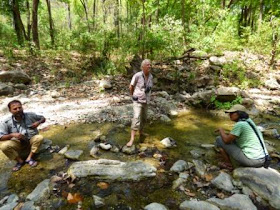When our friends, Ritish Suri and his wife, Minakshi, residents of the area, invited Rom and I to visit, I demurred. Ritish insisted there were parts of Corbett, like Halduparao, that few tourists visited. Then he dangled a carrot: herds of elephants congregated in the nearby river during May, at a time when the country was in a heat daze. My spouse, Rom, had last visited 40 years ago when he did the first crocodile survey in the area, just when the water had risen to fill the newly constructed Kalagarh dam.I had never visited Corbett Tiger Reserve. The main tourist complex of the Forest Department was smack in the core area, supposedly a zone of no human disturbance. Scores of private resorts lined the edges of the park, and many hosted loud parties. None of this enticed me to visit.
I was intrigued, and Rom was curious to see how the park had changed since.
Read the rest here at Outlook Traveller October 2014





